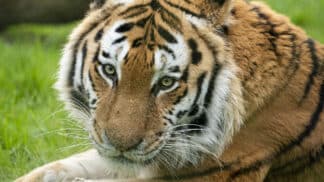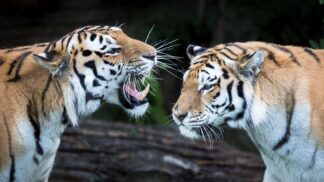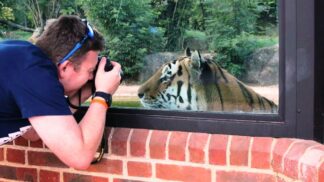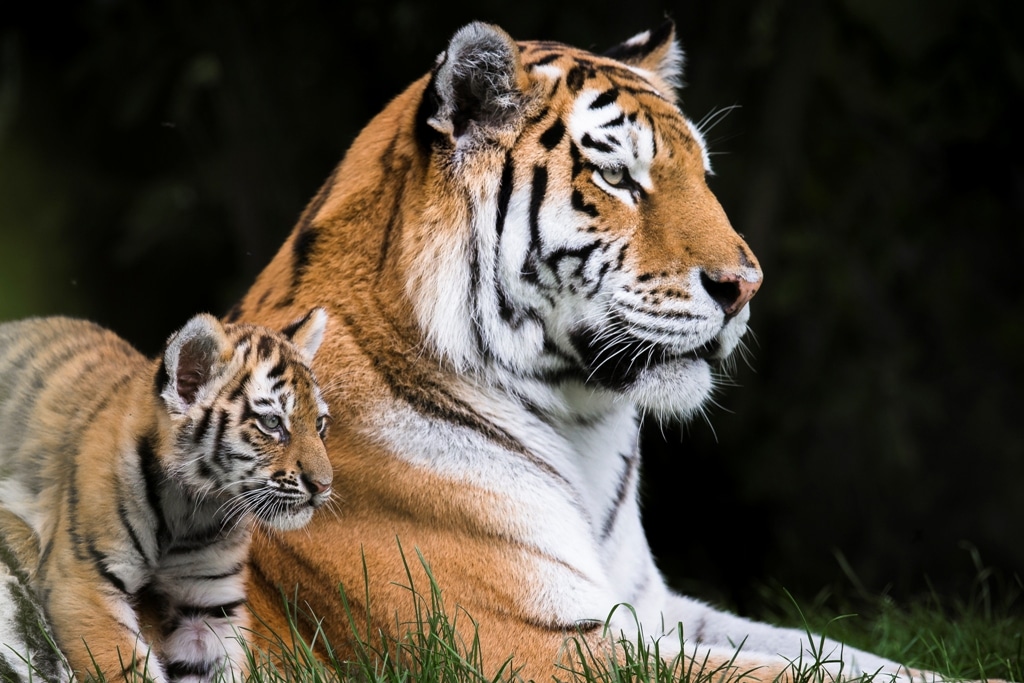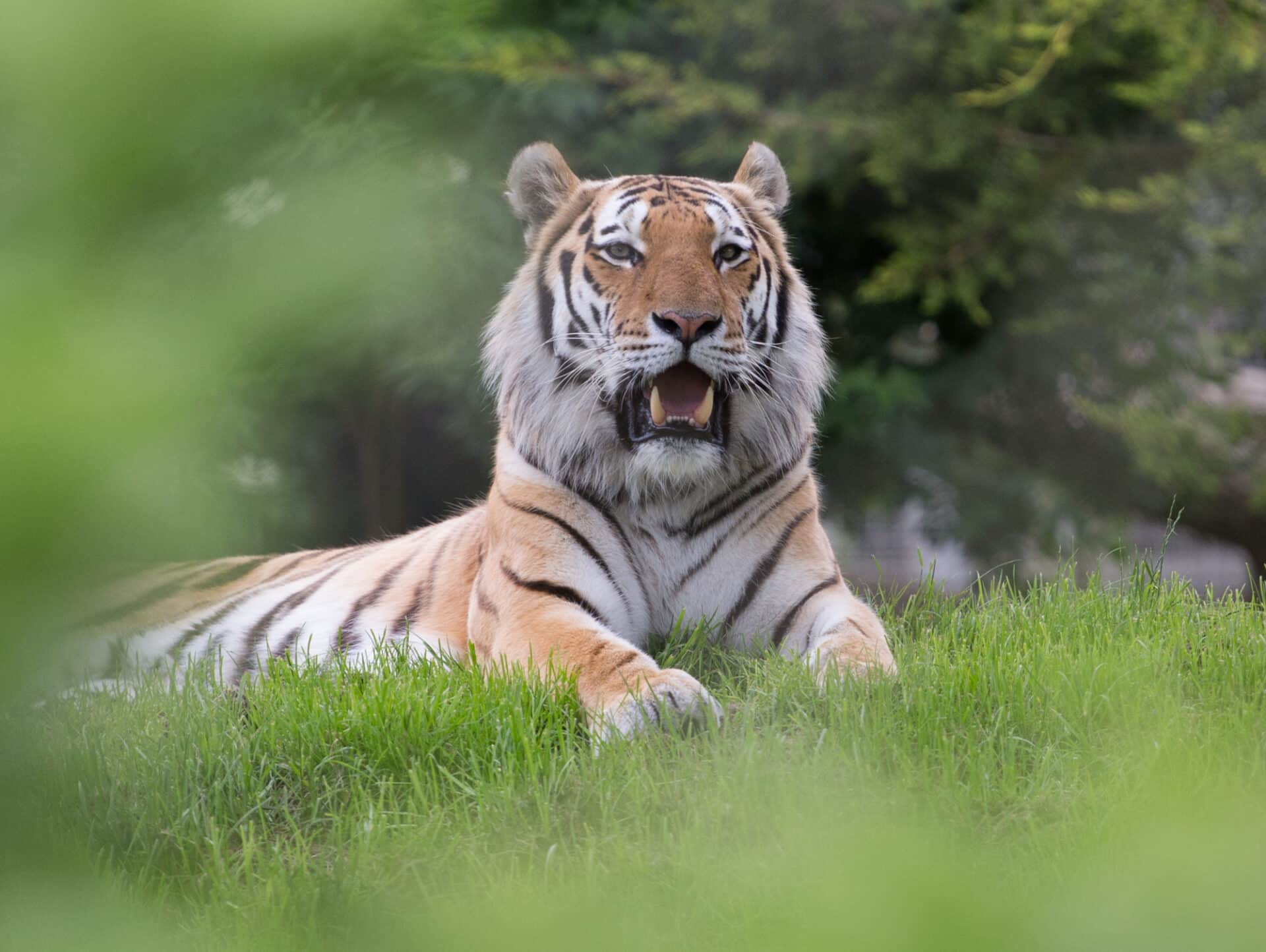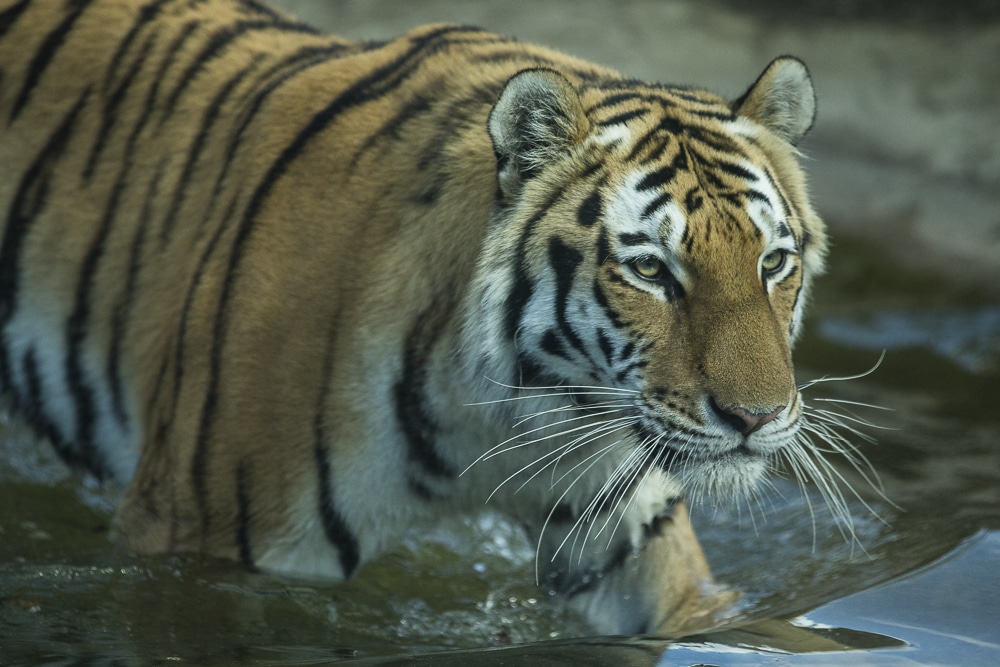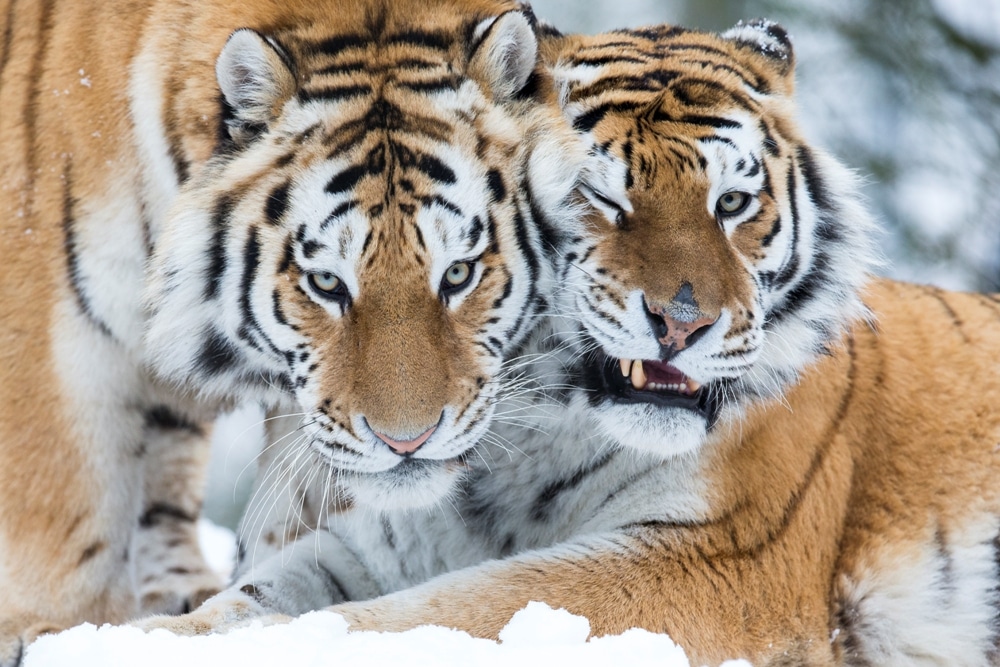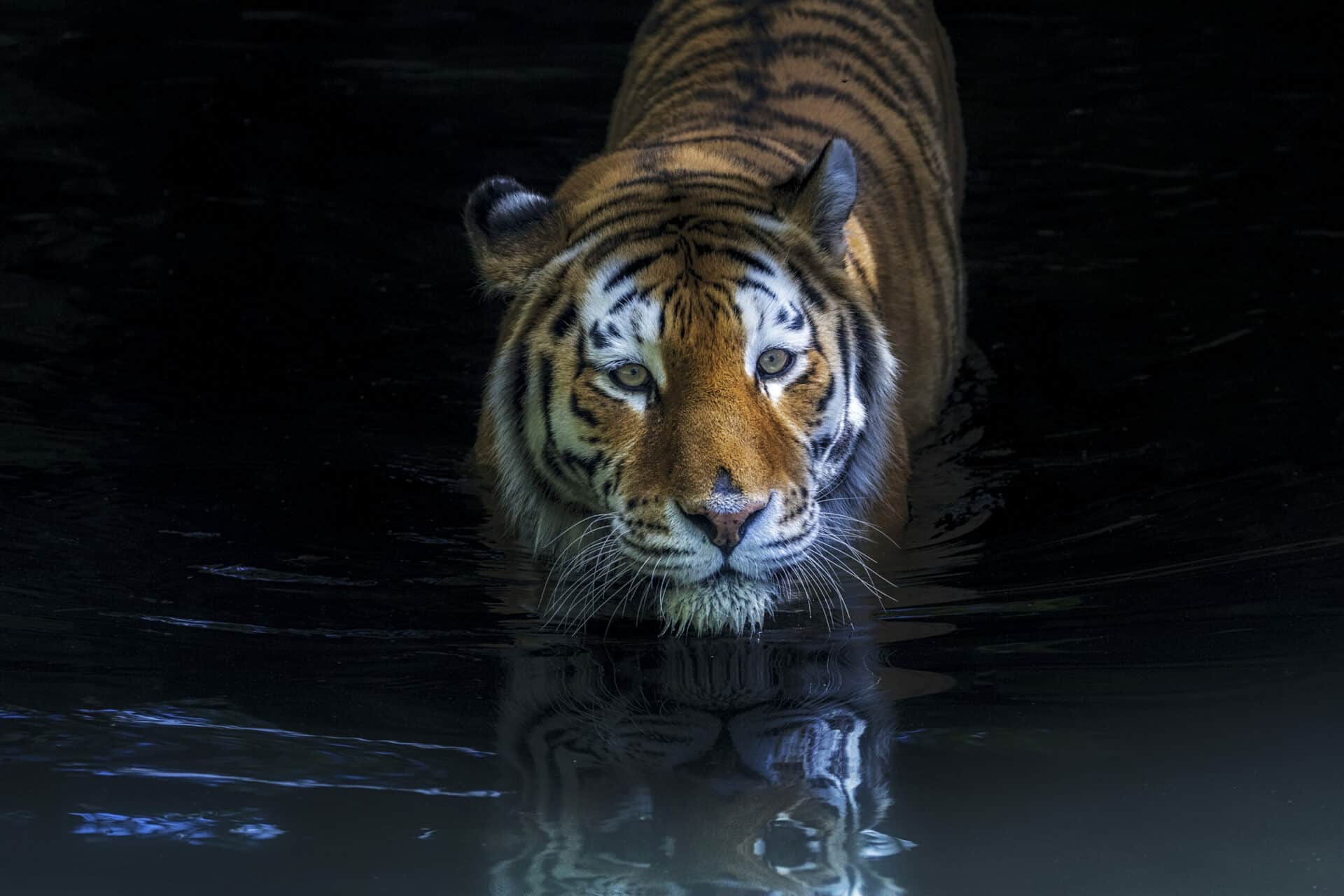Amur tiger
Common name: Amur tiger
Scientific name: Panthera tigris altaica
The largest type of tiger, these powerful striped hunters are the world’s biggest cat. They are known for their distinctive black on orange markings, which are unique to each individual tiger. These magnificent animals have evolved to be supreme hunters, capable of single-handedly capturing and killing large prey.
Highly specialised carnivores, they use senses to stalk their prey, and a powerful build to catch them. Like all members of the cat family, they are digitigrade which means that they walk on their toes, or digits, rather than on the flats of their feet like we humans do. It is thought that this helps them to move more silently. Their large but short skull gives them a stronger bite than many other carnivores their size.
Extraordinary, long canine teeth grip onto the struggling prey, as a killing bite is delivered to either the back of the neck or the throat.
The International Union for Conservation of Nature (IUCN) currently recognises a single species of tiger with 6 living subspecies. However, this is under review with recent studies proposing that the 6 living subspecies along with 3 subspecies that became extinct within the last century, are redistributed amongst just 2 subspecies.
Whether a separate subspecies or a regional population, the Amur tigers are generally agreed to be the palest and largest type of tiger.
Fast Facts
-
Status
Endangered
-
Size
Males 2.7-3.3m, females 2.4-2.7m length
-
Weight
Males 180-306kg, females 100-167kg
-
Gestation
3.5 months
-
Number of young
1-5 cubs
-
Lifespan
12-15 years
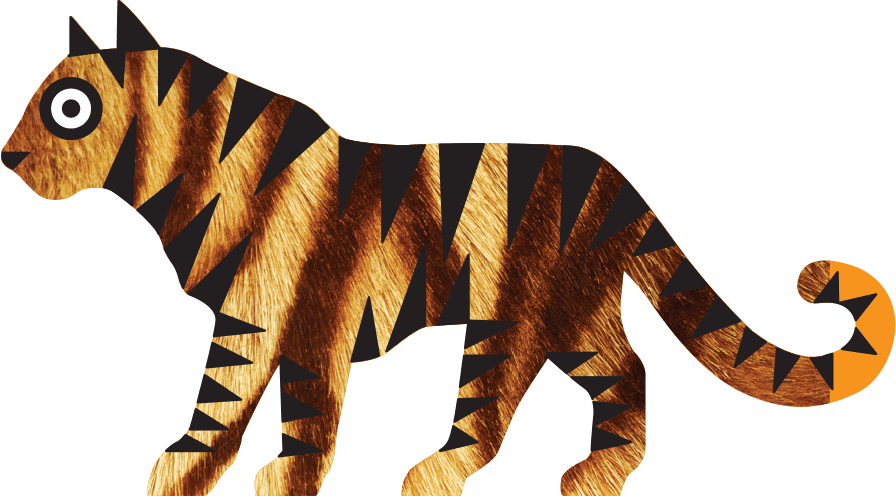
In the wild
Tigers are carnivores who actively hunt and ambush animal prey. To survive, tigers need to eat 50-60 large prey animals per year. They are opportunistic hunters though, so will also take smaller prey like hares or badgers if the opportunity arises. However, getting enough of their preferred prey, which are large animals around the same weight as them, is important for successful breeding. Amur tigers prefer to hunt wild boar, roe deer and sika deer.
It is important that they have cover to hide in when they are stalking their prey. They will get as close as possible to the prey before they rush out and attack. Small prey is typically killed with a bite to the back of the neck while large prey is killed with a bite to the throat. They will often drag their prey to cover and rest near the carcass, feeding from it over the next few days if the kill is large. If they leave their kill, they will cover it with leaves and stones to hide it until they return. Amur tigers make around 1 successful kill per week.
Their front incisor teeth are used in nipping flesh from a carcass, while the impressively long canines are used to grip onto prey. One of the upper pre-molars slides neatly along a lower molar, like scissor blades, to slice meat off. These are known as the ‘carnassial teeth’. Even their tongue, which is rough from being covered in pointy papillae (bumps that help with eating and contain taste buds and temperature sensors), is adapted to get all the last bits of meat off the bones. Tigers won’t then eat for a few days until they have made their next kill. Females with cubs who depend on them for food must kill more often and hunt larger prey to feed all the hungry mouths. They are most active at night (nocturnal), or in the early morning and late evening (crepuscular).
As with all tigers, habitat needs to include thick plant cover for shelter and to allow hunting. They also need a water source, and very importantly, enough large prey in the area for them to hunt.
Amur tigers live in the low forest-covered mountains of the Russian Far East, with small numbers still thought to be living in Northeast China. Most tigers live in tropical Asian forest, but the temperate birch, oak, and spruce forests where the Amur tigers live get very cold in the winter. Amur tigers are found the furthest north of all tigers.
Temperatures of -34C and thick snow are not unusual during the winter months. During this time, the Amur tiger’s fur thickens up and lengthens to keep them warm. It’s also thought that their larger body size helps them to retain body heat. In this temperate habitat there are also fewer suitable prey animals available all year round than are found in warmer tropical tiger habitats. This means the Amur tigers must range over a much larger area than the others, to make sure they get enough food. Male tigers also have larger home ranges than females as their range tends to overlap several different female’s ranges. The home range of a male Amur tiger can be around 25 times larger than the range of other types of male tigers where there is a good amount of prey. This means that at 400 sq.km some female Amur tigers will have an exclusive home range or territory the size of the Isle of Wight. The average male Amur tiger’s range is even larger at 1,379 sq.km – almost the size of Greater London.
Tigers have no natural predators themselves, but adult male tigers have been known to kill cubs that were fathered by other males. Apart from humans, tigers are the top predator in their environment, and help to regulate the numbers of their prey species in the area. This reduces the impact having too many of the prey species could have on the plants and other resources in the area too.
Tigers are solitary animals in the wild, living alone except for females that have cubs. Females need to have strict territories with enough resources such as food and cover to allow them to raise their young. This means their territories don’t usually overlap with other females as they would be in competition with them.
Males’ territories are larger and usually overlap 2 or 3 different female’s territories for breeding. Loud calls, urine, faeces, log scratching, and scent marking are used to communicate with each other and advertise territories. Body posture is particularly important for close-up communications between tigers to avoid any unnecessary, dangerous fights.
Females tend to be around 3.5 years old when they start breeding, while males are usually around 5 years old. Amur cubs are most likely to be born in the spring, after a gestation of around 3.5 months. Typically, 2 -4 helpless cubs are born with their eyes closed, inside a birth den in thick vegetation, or rock crevices. They grow quickly suckling on their mother’s milk and quadruple their weight within the first month. By 6 months they are weaned off milk and have moved onto eating solid food. They get their impressive permanent canine teeth at 12-18 months old. Whilst they are with their mother, they learn to perfect the hunting skills they will need to survive on their own. By 18 months old they are becoming independent and most leave to establish their own territories between then and 2.5 years old.
The Amur tiger story clearly shows the success conservation measures can have. They have already made an amazing comeback from the brink of extinction in the 1930s. At that time there were just 20-30 individual wild animals left. Russia then banned the hunting of tigers and reduced the hunting of their main prey species. This allowed Amur tiger numbers to climb to around 350 – 400 animals by the early 21st century and justified downgrading the Amur tigers’ conservation status from Critically Endangered to Endangered.
Unfortunately, numbers have started to decline again since then, mainly due to increased illegal hunting of tigers and of the prey animal species they need to survive. They are also especially at risk from habitat destruction as Amur tigers need such large areas to find enough prey to eat.
All of today’s Amur tigers are descended from that small number of tigers in the 1930s, which also makes them more vulnerable. As they are now so genetically similar to each other the population may not be able to adapt so well to any new pressures that come along, like diseases or climate change.
However, with local, national, and international support, it is possible for Amur tigers to survive into the future. These are some of the conservation measures that will be needed:
- preserve and protect tiger habitat,
- stop the illegal hunting of tigers and the illegal trade in their body parts,
- protect large prey species in tiger habitats,
- work with people in the local communities living alongside tigers,
- restore tigers to their former range.
Tigers are already listed on the international endangered species CITES treaty as Appendix 1, which means they cannot be traded between countries, and they are protected in most of their range countries.
Amur tigers (once called Siberian tigers) were some of the first animals at Marwell. Kurten and Nimara arrived in 1970, before the zoo had opened, and the first cub was born in 1973. Marwell has been home to over 30 tigers since then, with Marwell-born cubs eventually going on to different zoos all over the world. Many of these cubs left to start families of their own as part of the Amur tiger EAZA Ex-situ Programme (EEP).
Through these European breeding programmes the species coordinator uses data from the studbook to manage the non-wild (Ex-situ) populations. They make sure they are stable, self-sustaining, and healthy populations, that can act as a genetic backup to wild (In-situ) populations. This means the Ex-situ population could also be a source of animals for any potential reintroductions back into the wild. With advice from the expert committee members for that species, the coordinator generates and shares information on husbandry, research, and conservation activities.
Here at the zoo, current tiger, Pasha has access to indoor dens and an outdoor enclosure. This contains ponds, platforms, individual dens, rocks, logs and grass, with shrubs and trees providing the dense cover he would need in the wild.
He is fed cuts of different meats such as chicken, beef, rabbit, or horse, or sometimes a whole animal carcass. The meat is given in different ways. Sometimes the food is hidden, tied up in a hessian sack or even hung at the top of a pole. This requires him to use different muscles just as they would in the wild when ambushing prey. By sometimes feeding him whole animal carcasses we’re ensuring that he fully uses the muscles in his jaw and neck. It also helps to keep his gums healthy and reduce plaque, much like toothbrushing and flossing does for our teeth and gums.
Tigers are not fed every day in the zoo because they would not have a successful hunt and feed every day in the wild. Their bodies are adapted to eating larger feeds every few days, so we try to reproduce this. The keepers also make scent trails through the enclosure with food or other scents to encourage Pasha to use his olfactory organs, as they would to smell and track prey animals in the wild. New scents stimulate the olfactory senses (sense of smell). These senses are extremely important to territorial carnivores as they spend a lot of time smelling and marking their territory. Using scent enrichment can encourage general activity and promote natural behaviours like scent marking.
